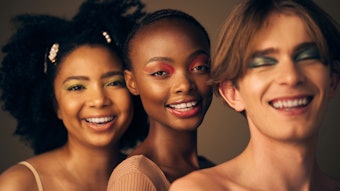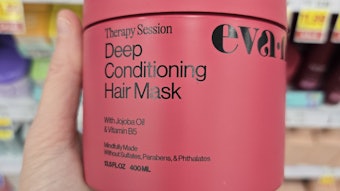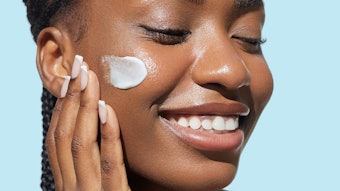
To read this article in its entirety, click through to your February 2020 digital magazine.
Editor’s note: Cosmetics & Toiletries is excited to welcome this newly focused column from Katerina Steventon, Ph.D., on research exploring the emotional connections between consumers and cosmetics. This month she considers the impact of hair.
People want to look young for their age. The primary factors behind a woman’s appearance, whether genetic or environmental, that determine her perceived age are still debated; although hair aging is an important facet. Hair recession, i.e., hair loss on the frontal and temporal region of the head; hair thinning on the top of the head; and hair graying are features that matter in relation to appearance. Following is a brief review of recent hair aging research.
Nurture or Nature?
A Unilever study examining the facial appearance of female Danish twins ages 59 to 81, and British women ages 45 to 75 showed that hair graying and thinning are significantly and independently associated with the perception of age. Both hair graying and the recession of hair from the forehead are influenced mainly by genetic factors, whereas it has been suggested that environmental factors can influence hair thinning.
A positive, causal relationship for hair graying and thinning with perceived age also has been proposed, and research has shown that women who look young for their age have genetic factors that protect them against the development of gray hair. Furthermore, women who color their hair look younger for their age; therefore, both nature and lifestyle play a role in maintaining a youthful appearance.1
Color Illusion and Movement
Youthful-looking hair is desirable at all ages, and hair’s overall appearance is a crucial factor to the consumer’s sense of well-being. Interestingly, as reported by researchers at the Mayo Clinic and Rajarajeswari Medical College and Hospital,2 the white appearance of canities is an optical illusion created by the reflection of light, which masks the intrinsic pale yellow color of hair keratin. Gray hair has some color with sparsely distributed melanosomes; however, white hair is completely deprived of melanosomes and color. White hair also occurs only on the scalp.
Besides hair color, its movement dynamics have an impact on a youthful appearance. According to Henkel research,3 the hair follicle is subject to biochemical changes that become obvious in a person’s mid-30s with the first appearance of non-pigmented gray hairs. These hairs move with dynamics that are different than pigmented hair, dictated by the internal structure, thickness and waviness of single hair fibers, fiber-fiber interactions, and the shape and volume of hair collectives.
As these properties change with age, they lead to differences in the dynamic movement of hair. For example, graying hair dampens movement by causing energy loss. Its higher waviness, and larger volume and diameter also lead to stiffness, less bouncy movement and a coarse, duller appearance.3
Continue reading in our February 2020 digital magazine. . .
References
- Gunn, D. A. and et al. (2009, Dec 1). Why some women look young for their age. PLoS One 4(12). Available at www.ncbi.nlm.nih.gov/pubmed/19956599.
- Bangalor Kumar, A., Shamim, H., & Nagaraju, U. (2018). Premature Graying of Hair: Review with Updates. Int J Trichology 10(5) 198-205. Available at www.ncbi.nlm.nih.gov/pmc/articles/PMC6290285.
- Bechthold, L., Wiesche, E. S. Z., & Wortmann, F. J. (2018). Morphological Changes of Human Hair Related to “Graying.” J Cosmet Sci 69(5) 335-346. Retrieved from www.ncbi.nlm.nih.gov/pubmed/30767882.











